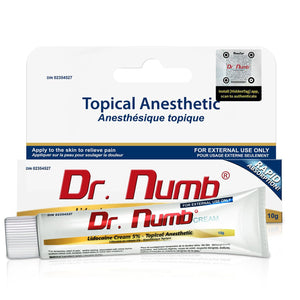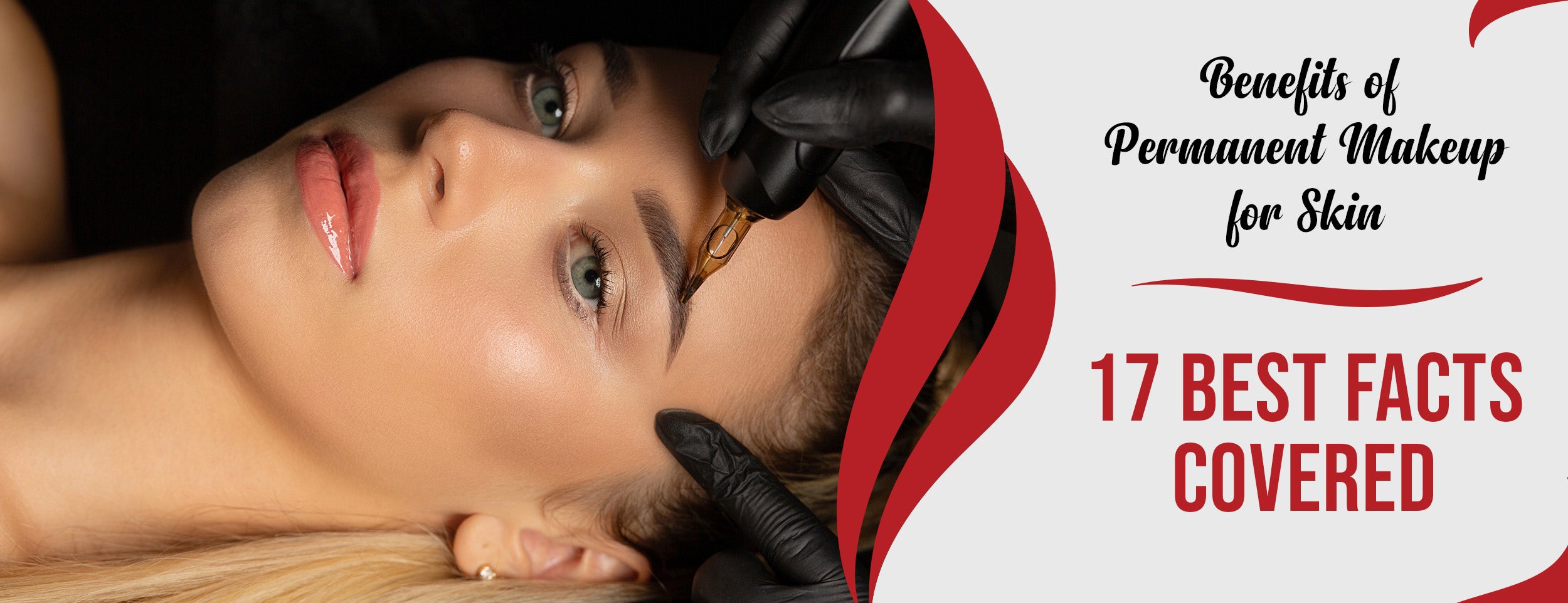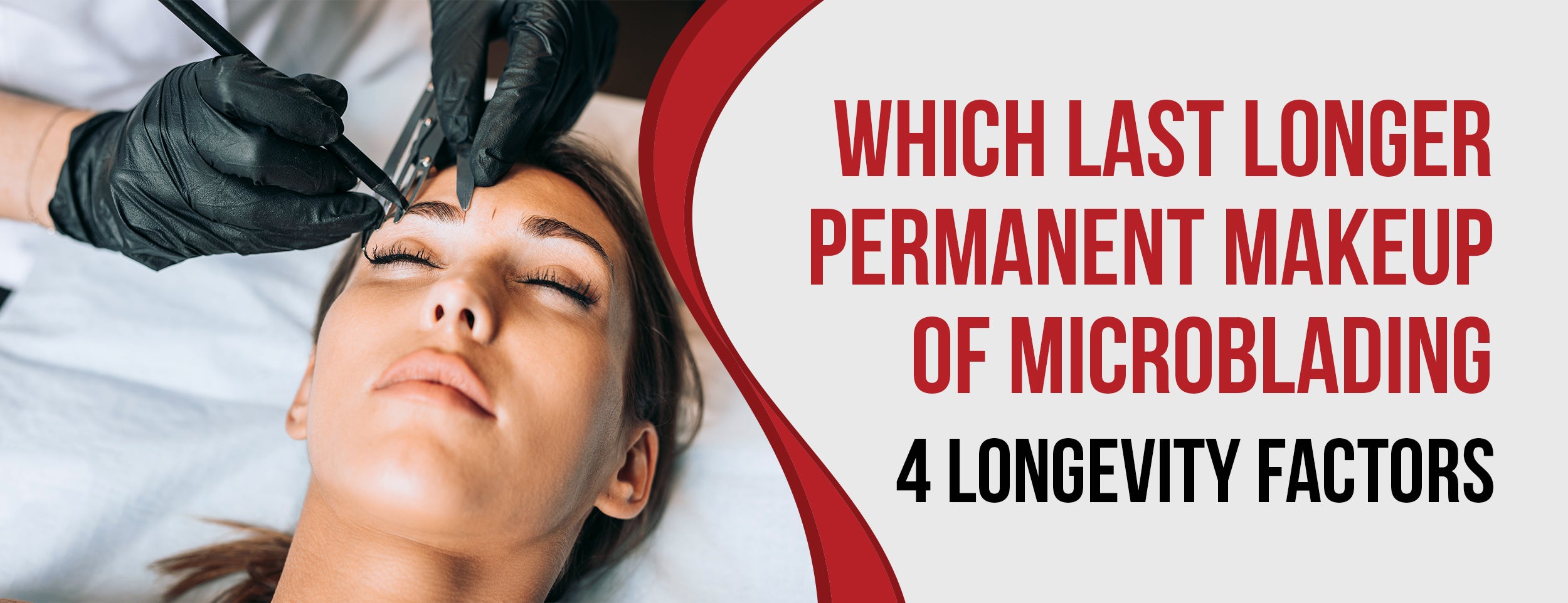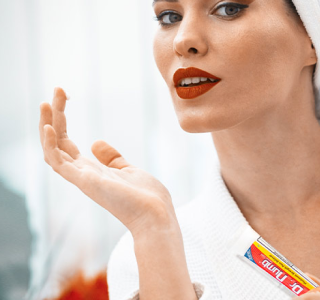How much risk might it be if you remove lip makeup permanently? If you are not careful enough, you might end up with permanent scarring on your lips. But the question is, how can you do it?
Laser removal, saline removal, and glycolic acid removal are all proven methods of permanent makeup removal. This comprehensive guide will explore the factors you must consider before removing your permanent lip makeup.
We will discuss popular removal techniques and provide insights into DIY home remedies for those who prefer to avoid professional removal. We will cover crucial post-removal care and provide instructions for optimal healing.
How to Remove Permanent Lip Makeup: 3 Methods

Different ways to remove permanent lip makeup exist, but not all are equally effective, safe, or affordable. Laser tattoo removal, saline tattoo removal, and microblading are some of the most common methods of removing permanent lip makeup.
Laser Tattoo Removal
Laser tattoo removal is a top-notch way to remove permanent lip makeup. It uses a powerful laser beam to break down lip pigment, which is then removed by your body's immune system. This process is safe and does not harm the surrounding tissue.
Laser tattoo removal can eliminate various colors in fewer sessions and with less damage to your lips. While it may be cost-effective, removing permanent lip makeup can be painful and pose risks.
- Cost: Removing a laser tattoo can be quite expensive, ranging up to $500 for each session. The total cost may vary depending on the size of the area and the amount of pigment that needs to be removed.
- Pain: Laser tattoo removal might be uncomfortable during and after the procedure as the laser pulses on your sensitive lip area.
- Risk: Laser tattoo removal may have side effects like redness, swelling, blisters, scars, infections, or changes in lip color. It might need some rest and care for healing and recovery.
If you're certain about removing your permanent lip makeup, it's important to consult a qualified laser technician before considering laser tattoo removal. They will evaluate your situation and create a personalized treatment plan.
Saline Tattoo Removal

Saline tattoo removal is an effective method for removing permanent lip makeup. It involves injecting a saline solution to dissolve the pigment and draw it out. The solution is similar to your body's natural fluids. The saline solution is injected into the same area where the pigment was deposited, creating a scab with the pigment. The scab naturally falls off after a few days, taking the pigment with it.
Sal tattoo removal provides a better option than laser tattoo removal. It removes colors effectively in fewer treatments and with less discomfort. Although it takes more time and effort, it guarantees precise and cleaner results.
- Cost: Saline tattoo removal can cost up to $300 per session based on the area and amount of pigment to be removed.
- Pain: Saline tattoo removal can be uncomfortable, with some feeling pain or pressure when injecting salt solution into your lips.
- Risk: Removing tattoos with saline may result in side effects like scabbing, itching, scarring, infection, or pigment changes on your lips. It may also require healing time and aftercare for best results and to avoid complications.
We suggest saline tattoo removal if you desire a gentler, more natural approach to removing your permanent lip makeup. It is crucial to consult with a trained permanent makeup artist or tattoo artist beforehand. They can thoroughly assess and tailor a personalized treatment plan to meet your needs.

Microblading Over
Microblading is an option for removing permanent lip makeup. It uses a handheld tool with fine needles to deposit new pigments over the old ones, creating a fresh look. It can fix flaws like fading, blurring, or color changes while providing a realistic and natural effect.
Microblading can swiftly alter or enhance your permanent lip makeup without complete removal. It carries risks and limitations when used for removing permanent lip makeup.
- Cost: Microblading can be expensive, with costs varying up to $500 per session depending on the location and amount of pigment needed.
- Pain: Getting microblading done may cause discomfort during and after the procedure since the needles poke your lips.
- Risk: Getting microblading done on your lips can have side effects. These may include redness, swelling, bleeding, infection, or an allergic reaction. Additionally, it may need some time to heal properly and require aftercare for better healing and retention.
- Limitations: Microblading cannot fully remove permanent lip makeup. It only offers temporary masking or modification. Like other semi-permanent makeup, it can fade or change color over time, restricting future options for altering or removing permanent lip makeup.
For a quick and easy update or enhancement to your permanent lip makeup, we suggest microblading. Ensure you consult a reputable and experienced permanent makeup artist beforehand. They will provide a detailed assessment and a customized treatment plan.
DIY Home Remedies for Lip Makeup Removal

Alternative to professional methods, one can explore DIY home remedies for eradicating permanent lip makeup. These remedies leverage natural or household ingredients to diminish or peel off lip pigment gently. While they are cost-effective and convenient, it is crucial to acknowledge that they may be time-consuming, less dependable, and carry some level of risk.
Below are a few do-it-yourself (DIY) home remedies that you can consider for effectively removing permanent lip makeup:
Lemon Juice and Salt Scrub
This technique utilizes a combination of lemon juice and salt to naturally bleach and exfoliate the pigment from your lips. The process involves the following steps:
- Combine equal parts lemon juice and salt.
- Apply the mixture to your lips using a cotton ball or toothbrush.
- Gently scrub your lips for approximately 15 minutes.
- Rinse your lips with water.
- Repeat this procedure daily for several weeks or months until you achieve the desired results.
By following this regimen consistently, you can gradually lighten and rejuvenate your lips using this simple yet effective method.
Limitations and Risks
While this method is natural and cost-effective, it's important to acknowledge its limitations. Permanent lip makeup may not be effectively removed, and individual results can vary based on pigments.
There are potential risks associated with this approach, including:
- Lip irritation, inflammation, infection, scarring, and potential damage to the natural lip color or texture.
- Increased sensitivity to sunlight and a higher risk of sunburns.
- Allergic reactions to lemon juice or salt.
We strongly advise against attempting this method without consulting a doctor or dermatologist. They can guide this technique's safe and effective use or suggest alternative approaches.
Baking Soda and Coconut Oil

This method involves using a combination of baking soda and coconut oil to exfoliate and moisturize your lips, removing pigmentation gently. Here's how to do it:
- Mix equal baking soda and coconut oil in a 1:1 ratio.
- The mixture should be applied to your lips with a cotton ball or a soft toothbrush.
- Scrub your lips gently for about 10 minutes.
- Rinse off with water.
- Repeat this process weekly or monthly until you notice visible results.
Drawbacks and Dangers
While this method may seem natural and inexpensive, permanent lip makeup removal proves ineffective and potentially harmful. It's worth noting that this approach may yield different results for some or certain pigments. It carries the risk of various undesirable outcomes, including:
- Irritation, inflammation, infection, or scarring of the lips
- Skin issues like clogged pores or breakouts
- Potential damage to tooth enamel or heightened sensitivity to temperature in food and drinks.
Given these potential risks, we strongly advise against employing this method unless you have sought guidance from a medical professional or dermatologist. They can provide invaluable insights on safely and effectively using this method or suggest alternative approaches.
Exfoliation Techniques
This technique involves using different exfoliation methods to gently remove pigment and the outer layer of skin from your lips. You have a few options:
- Physical exfoliation techniques, like sugar scrubs, pumice stones, or sandpaper.
- Chemical exfoliation techniques, including glycolic acid peels, salicylic acid peels, or trichloroacetic acid peels.
Here's how to do it: Apply the exfoliant to your lips and let it sit for a few minutes before rinsing it off. Repeat this process every week for weeks or months until you start seeing results.
Complications and consequences
This method offers improved effectiveness and efficiency compared to previous lip makeup removal methods. It comes with increased risks and discomfort. It might be suitable for certain types of pigments, but not all. Moreover, it can lead to potential issues:
- Lip irritation, inflammation, infection, or scarring.
- Alteration of natural lip color or texture.
- Hypersensitivity or allergic reactions to exfoliants.
Only using this method by consulting your doctor or dermatologist is strongly recommended. They can guide you safely and effectively utilize this technique or suggest alternative solutions.
Factors to Consider Before Removal
Below are some important factors that should be considered before deciding on permanent lip makeup removal.

Consultation with a Professional
For permanent lip makeup removal, it's crucial to consult a professional who can evaluate your situation and recommend the best option. This could be a certified laser technician, an expert in permanent makeup, or a licensed dermatologist experienced in lip makeup removal.
A professional will examine your lips, considering factors like pigment type, quality, quantity, pigment deposition depth, and density. They will also assess your skin tone, medical history, and condition.
They suggest suitable removal methods like laser, saline, or microblading based on these factors. They will discuss the pros and cons, costs, number of sessions, expected results, and potential risks.
A patch test may also be done to check for any allergic reactions. The professional will provide pre-removal instructions and post-removal care guidelines for optimal results and minimal complications. It is strongly recommended to consult a professional for a detailed assessment and a personalized treatment plan.
Skin Type and Sensitivity
Your skin type and sensitivity are crucial when removing your permanent lip makeup. They can influence how your skin responds to the removal method and the speed of healing afterward. It's important to understand and account for these factors to ensure the best outcome.
When removing permanent lip makeup, it's important to understand the four main skin types: normal, dry, oily, and combination. Each skin type has distinct characteristics and requirements.
- Normal skin is well-balanced, smooth, and resilient, with good moisture and elasticity. It isn't excessively oily or dry and tolerates most removal methods well, healing quickly afterward.
- Dry skin feels tight and dull and is prone to flaking and irritation. It lacks moisture and elasticity, making it sensitive to certain removal methods. Healing may take more time for dry skin.
- Oily skin, characterized by its shine, greasiness, and thickness, produces excess oil and sebum. It's prone to clogging, breakouts, and inflammation. Oily skin may be more resistant to some removal methods, but it tends to heal quickly afterward.
- Combination skin is a blend of dry and oily skin. It exhibits different zones of oiliness and dryness, experiencing both the challenges and benefits of both skin types. The reaction to removal techniques and the healing process can vary across different areas of combination skin.
Understanding your skin type is crucial in determining how your skin absorbs or rejects pigment, handles the removal process (including potential bleeding and scarring), and how likely it is to experience color or texture changes afterward.
To identify your skin type, you can perform a simple test by washing your face with a mild cleanser, patting it dry, and observing it after an hour. Alternatively, seeking professional advice can provide an accurate analysis of your skin type and tailored recommendations for the best removal method.
Color and Age of the Lip Tattoo

To remove permanent lip makeup, consider the lip tattoo's color, age, and condition. These factors can impact the ease of removal and the number of sessions or methods needed.
Warm and cool are two main types of colors for permanent lip makeup. Warm colors include shades of red, orange, or yellow. Cool colors include shades of blue, green, or purple. Each color type has different properties and challenges when removing permanent lip makeup.
- Warm colors: Warm colors are a better fit for most skin tones, giving a more natural and flattering look. They are also more stable and less likely to fade or change over time. Removing warm colors can be challenging as their pigment particles are deeper in the skin and may need more treatment sessions or stronger methods for complete removal.
- Cool colors: Cool colors can look unnatural and contrasting on most skin tones. They are also more prone to fading or changing over time and are easier to remove. This is because they have smaller pigment particles not deeply embedded in the skin. As a result, they may require fewer sessions or less intense methods for complete removal.
The age of the lip tattoo affects its removal difficulty. Older tattoos are more faded and blurred, making removal easier due to less pigment. There may be residual pigment or scar tissue, making removal harder. Consider the color and age of your lip tattoo before using a suitable removal method. Adjust your expectations and goals accordingly.
Post-Removal Care and Healing

After removing your permanent lip makeup, it is crucial to prioritize post-removal care and healing to recover your lips properly. Follow the aftercare instructions provided by your provider diligently and avoid activities that may irritate or infect your lips. Here are some standard measures to consider for post-removal care and healing:
- Apply a recommended moisturizer or antibiotic cream as directed.
- Shield your lips from sun exposure with sunscreen.
- Refrain from consuming spicy, acidic, or hot foods and drinks that may cause discomfort.
- Avoid smoking or consuming alcohol to prevent drying out or inflaming your lips.
- Resist the urge to lick or kiss your lips, as it may introduce bacteria or saliva.
- Hold off on applying makeup or skincare products until your lips have healed.
- If necessary, take painkillers or anti-inflammatory medications as directed.
- Contact your healthcare provider immediately if you observe any signs of infection or complications.
Adhering to these post-removal care and healing measures will safeguard your lips and allow you to savor your new look.
Conclusion
Permanent lip makeup is a cosmetic procedure that enhances beauty and confidence. It can fade, change, or cause problems over time. You have options like home remedies or professional procedures to remove it. Each option has pros and cons, so consider them carefully.
This article provides useful info and guidance on removing permanent lip makeup and answering common questions. Remember, it's not simple or easy and involves risks, costs, and consequences. Consult a professional for advice.

![How to Remove Permanent Lip Makeup: 6 Methods [DIY Included]](http://drnumb.ca/cdn/shop/articles/How_to_Remove_Permanent_Lip_Makeup__6_Methods_DIY_Included.jpg?v=1705409818&width=1100)











